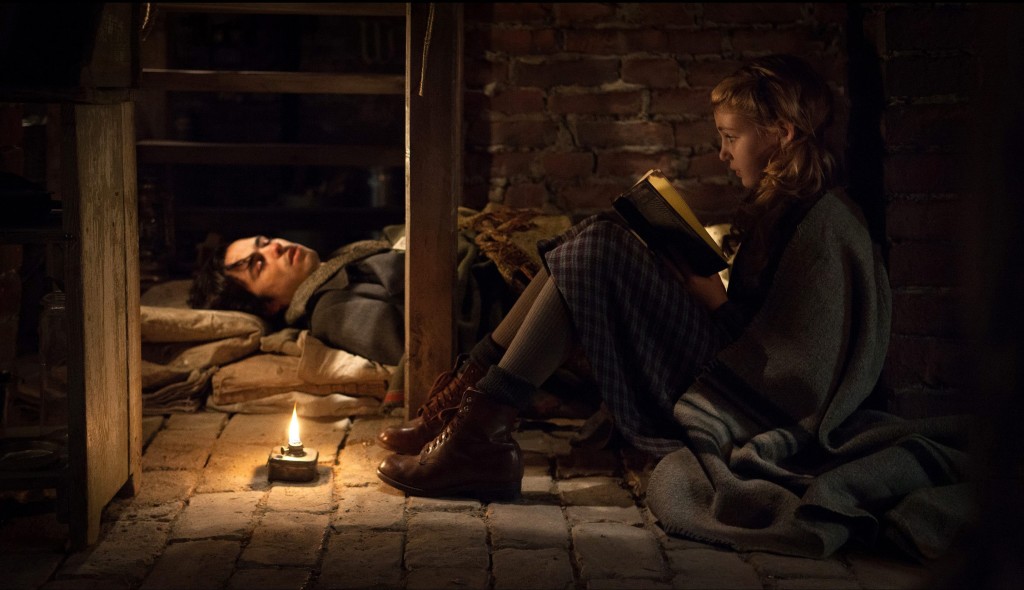
The Moviola Review: Beauty in Translation: The Book Thief
Written by: Meaghan Clohessy, Special to CC2K
The Moviola’s Meaghan Clohessy reviews the film adaptation of Markus Zusak’s novel The Book Thief.
Markus Zusak’s The Book Thief combines both genres of WWII fiction and coming of age tale. The story covers themes of innocence and humanity wrapped in a bilingual structure. Despite potential difficulties in translating these nuances into film, director Bryan Percival succeeds in the adaptation from page to screen. Narrated from the point of view of Death (Roger Allam), follows Liesel Meminger (Sophie Nelisse) and her growth on Himmel Street in WWII. While learning to read, she takes to stealing books after a burning occurs in her town. Her eyes become further opened to the war torn world around her after her foster parents start hiding a fugitive Jew named Max (Ben Schnetzer). Complete with amazing performances and subtle cinematography, The Book Thief becomes an excellent adaptation of the Zusak classic. In the historical fiction landscape, the film showcases humanity in a dark time.
The opening credits and scene establish the tone for the rest of the film. During the credits, the title of the film appears in German first before revealing the English translation. This weaving between the languages, present in the book, remains consistent throughout the film. Percival makes some very careful choices, not only when to transition between English and German, but also when to provide subtitles. These choices lead audiences through moments of both tension and cultural openness, adhering to a more European tradition of film making. After the credits, Death’s narration reminds audiences that we are destined to die, played over blue skies and shots looking over the German landscape. While a nice nod to Riefenstahl, the narration highlights Death’s omniscient presence. Even the film’s more tender moments are marked by the suggestion of upcoming horrific events; sooner or later, war comes to Himmel Street, with Death soon to follow.

Leaving these opening moments, the film remains startlingly true to the original text through subtle casting and technical work. In terms of casting, hats should tip to Kate Dowd for her incredible casting. Great attention to individual character details come to light on film, from the feathery hair of Schnetzer’s Max to the large and insightful eyes of Nelisse’s Liesel. Keeping with the eye imagery, the camera often focuses on Liesel’s gaze, becoming an extended metaphor for both her physical and intellectual growth. Even the film’s dialogue, often borrowing directly from Zusak’s novel, helps to retain much of its emotional appeal. Simple changes of lighting or camera angles speak help audiences to understand the beautiful nuance of the film without being beaten over the head.
Naturally, where book-to-film translation provides the backbone for the film’s strengths, it also answers for the film’s minor weaknesses. One such example is the slippery character of Death. In the book, Death has a distinct voice and personality. While his snarkiness and philosophical musings remain consistent in the book, it falters in the film by restricting the amount of voiceovers. As a result, audiences do not get the same insight into his character. If not for the intention to retain the fairy tale atmosphere, it probably would have been more beneficial to remove Death’s narration entirely. Another example is the minimal plot holes. Some sub plots go unresolved as an attempt to pick which events from five hundred pages to put into the film. Thankfully, these weaknesses do not affect overall enjoyment of the film. As far as adaptations go, The Book Thief is one of the more successful interpretations.
